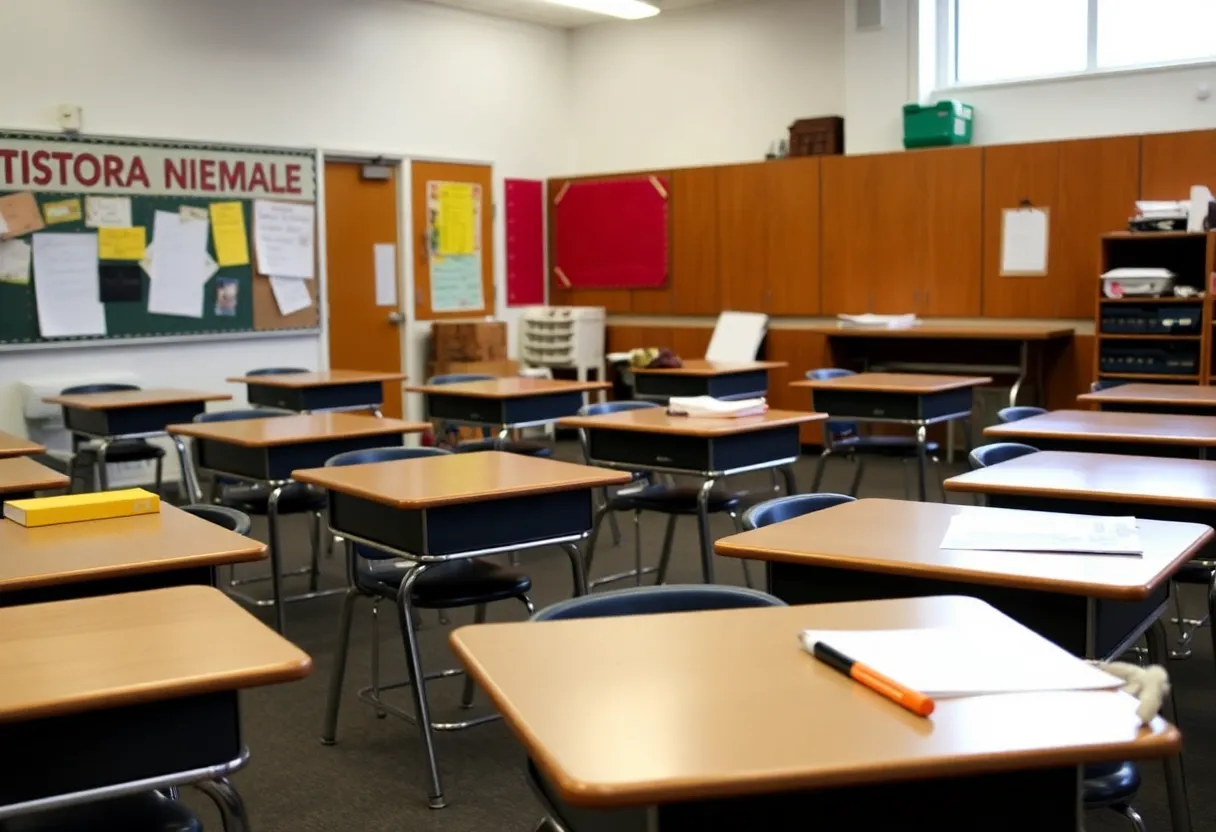News Summary
Pennsylvania continues to grapple with a significant educational funding crisis that highlights disparities across school districts. A constitutional mandate complicates the situation, restricting solutions to improve funding inequities. Recent legal changes and budget proposals offer hope, but challenges remain amidst political shifts and urgent needs in other public services. With the loss of key political figures and ongoing debates about funding reforms, the future of education in Pennsylvania hangs in the balance.
Another Day, Another Funding Dilemma in Pennsylvania
Pennsylvania’s Education System Faces an Uphill Battle
Living in the Keystone State means dealing with a complex educational funding crisis that seems to be never-ending. Despite some efforts to reform how schools are funded in Pennsylvania, major disparities still exist that affect the quality of education students receive across the state. These inequalities are deeply rooted and have been perpetuated by laws that, while well-intentioned, have created significant challenges for districts with growing student numbers.
The Constitution and the Fiscal Tightrope
One of the hurdles Pennsylvania faces is a clause in its Constitution that mandates all taxes be uniform. Essentially, this means the state cannot implement a graduated income tax system that could potentially ease some of the financial burden on lower-income families, while requiring wealthier ones to contribute more. This rule has set a rigid framework that limits creative solutions that could alleviate the funding disparities in education.
Hold Harmless: A Double-Edged Sword
Since the introduction of the “Hold Harmless” provision in a funding bill back in 1992, many school districts have found themselves in a bit of a financial pickle. This provision was designed to protect districts from losing funding when student populations fluctuate, but it also means that if students transfer from one district to another, both involved districts keep their funding levels. For districts with increasing student numbers, like Philadelphia, Harrisburg, and Reading, this has created a massive strain, exacerbating existing funding inequities. Meanwhile, districts that are losing students are left intact, creating a financial imbalance that seems impossible to perfect.
Recent Legal Changes: The Court Has Spoken
Just last year, Pennsylvania’s Commonwealth Court ruled that the way the state funds its educational system is unconstitutional. This ruling has sparked a wave of discussions about how to reshape the funding landscape. As we look forward, the Basic Education Commission is offering some viable recommendations aimed at bridging the funding gaps and restoring equity; however, they emphasize that a solution will take time and a lot of resources.
A Budgeting Battle in the Capitol
Looking at the most recent budget, it seems like relief may soon be on the horizon. Governor Shapiro has suggested boosting funding with an additional $526 million aimed at addressing those glaring gaps in adequacy and equity. However, this proposal hasn’t come without its critics. State Senate Republicans, led by Senate Appropriations Chair Scott Martin, are voicing apprehension over the financial feasibility of such increases. They worry that without new revenue sources, funding reform could remain overwhelmingly out of reach.
Political Shifts and Unfortunate Losses
In the backdrop of this ongoing funding crisis, the state faced the sad news of the passing of State Representative Matthew Gergley, following a health emergency. Although the loss is significant, Democrats still hold on to control of the Pennsylvania House, which plays a crucial role in shaping the future of education funding in the state. Recently reelected House Speaker Joanna McClinton continues to steer the ship even as the House remains evenly split between both parties.
Other Challenges Lurking on the Horizon
Meanwhile, as if the educational funding woes weren’t enough, other essential services like public transportation are also struggling. SEPTA, which serves millions of Pennsylvanians each year, is grappling with a staggering $240 million annual budget shortfall, further complicating the state’s financial picture.
In light of all these challenges, it’s crucial for Pennsylvania to find a way forward, not only for our schools but for all the services that residents rely on daily. Reform is never easy, but it is certainly urgent. As lawmakers contemplate their next steps, one thing is clear: the clock is ticking, and the stakes are high for the students who depend on a quality education for their futures.
Deeper Dive: News & Info About This Topic
HERE Resources
University of Pennsylvania Receives $8 Million Donation
Funding Suspension Hits University of Pennsylvania Amid Transgender Debate
Harvard University Files Lawsuit Against Trump Administration
University of Pennsylvania Faces Federal Funding Freeze Amid Controversy
Philadelphia Institutions Scramble Amid DEI Program Changes
US Government Moves Against Harvard Over Antisemitism Allegations
Dan Goughnour Secures Seat in Pennsylvania Special Election
Trump Administration Freezes $2.2 Billion in Harvard Funding
Addressing Child Care Access in Pennsylvania: Key Strategies
Seven Philadelphia School Principals Receive Lindback Awards
Additional Resources
- Bucks County Beacon: Opinion on Pennsylvania’s Education Funding
- Post-Gazette: School Funding Disparities
- WNEP: Impact of Cuts in Education
- ABC27: Fair Funding Formula Debate
- PennLive: Teachers Union Warns of Funding Cuts
- Wikipedia: Education in Pennsylvania
- Google Search: Pennsylvania Education Funding
- Google Scholar: Education Funding Disparities Pennsylvania
- Encyclopedia Britannica: Education
- Google News: Pennsylvania Education Funding






